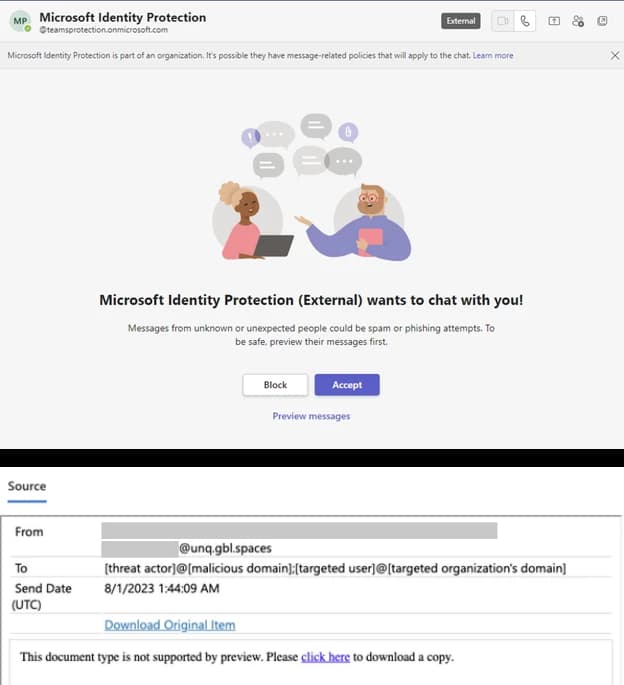Hping3 is a robust network tool that extends beyond conventional packet crafting, enabling users to probe and manipulate a variety of network protocols using techniques such as packet filtering and packet analysis.
This overview will address Hping3’s fundamental features and the common network protocols, such as TCP and ICMP, with which it interacts. It will also examine methods for identifying vulnerabilities utilizing Hping3, supplemented by real-world examples of protocol exploitation, including SYN flood attacks.
Additionally, essential best practices, such as establishing precise firewall rules and SYN flood detection mechanisms, along with tools to protect against potential attacks, will be discussed.
This comprehensive exploration aims to navigate the complex realm of network security and exploitation through the lens of Hping3, including insights into packet manipulation and packet scanning techniques.
The Basics of Hping3
Table of Contents
- 1 The Basics of Hping3
- 2 Common Network Protocols
- 3 How Hping3 Can Be Used to Exploit Protocols
- 4 Protecting Against Hping3 Exploits
- 5 Frequently Asked Questions about Hping3 and Network Security
- 5.1 What is Hping3 and how can it be used to exploit common network protocols, such as TCP, UDP, and ICMP?
- 5.2 Can Hping3 be used to exploit all network protocols, or is it limited to certain ones?
- 5.3 Is Hping3 a legal network tool to use for network exploitation?
- 5.4 What are some common vulnerabilities that Hping3 can exploit?
- 5.5 Are there any risks involved in using Hping3 for network exploitation?
- 5.6 In what situations would using Hping3 for network exploitation be necessary?
Hping3 is a robust network tool commonly employed in security auditing and network testing. It is designed to create custom packets, analyze packet transmission, and manipulate TCP/IP protocols, including packet size and TCP header options.
Developed by Salvatore Sanfilippo, Hping3 is compatible with various platforms, including Kali Linux and Windows 10, which enhances its versatility for network performance testing and Denial of Service (DoS) attack simulations, such as TCP SYN flood attacks.
This command-line interface tool is critical for network professionals and security analysts, as it facilitates the understanding and exploitation of TCP connections while assessing vulnerabilities in network resources, such as incoming connections and packet sending strategies.
What is Hping3?
Hping3 is a sophisticated packet generator and network utility that operates through a command line interface. It enables users to create and transmit TCP, UDP, ICMP, and RAW-IP packets for the purpose of analyzing and testing network performance, using command options to simulate different network scenarios.
Initially designed as a tool for firewall testing, Hping3 has evolved to encompass a wide array of functionalities that cater to the needs of network administrators and security professionals. Its capability to perform a comprehensive range of tasks, from network scanning to advanced packet filtering and protocol hierarchy analysis, renders it invaluable for identifying vulnerabilities within systems.
For example, users can utilize Hping3 to execute TCP SYN scans to identify active hosts or to simulate Denial of Service (DoS) attacks for the purpose of stress testing. The tool permits customization of packet flags, payload size, and packet count, thereby enhancing its utility for detailed diagnostics and security analysis.
This ensures that Hping3 remains an essential component of the toolkit for network professionals, especially when conducting packet manipulation and traceroute mode operations.
Common Network Protocols
Common network protocols encompass the Transmission Control Protocol (TCP) and the Internet Control Message Protocol (ICMP), both of which are fundamental for data transmission and network communication within the TCP/IP suite, as well as packet sending and incoming replies.
These protocols establish the rules governing data exchange between devices, facilitating functionalities such as error reporting, flow control, and data fragmentation through various packet types.
Notable examples include:
- SYN packets, which are used for initiating connections and are crucial in TCP handshake processes,
- ACK packets, which serve to acknowledge the receipt of data and are integral to maintaining TCP connections.
Overview of Common Protocols
The overview of common network protocols includes Transmission Control Protocol (TCP), User Datagram Protocol (UDP), and Internet Control Message Protocol (ICMP), each fulfilling distinct roles in data transmission, packet analysis, and enhancing network efficiency.
TCP is recognized for its connection-oriented approach, which ensures reliable communication by establishing a connection prior to data transmission. This reliability is crucial for applications where data integrity is of utmost importance.
Conversely, UDP functions as a connectionless protocol, facilitating faster data transfer, albeit at the expense of reliability. This characteristic makes UDP suitable for time-sensitive applications such as video streaming and online gaming.
ICMP serves a different function, primarily focused on transmitting error messages and operational information, including network diagnostics through tools such as ping and echo request functionalities.
A comprehensive understanding of these protocols, along with their interactions with firewalls and security measures, is essential for effective packet analysis and packet filtering. This knowledge enables network administrators to implement robust firewall rules that intelligently manage traffic flow.
How Hping3 Can Be Used to Exploit Protocols
Hping3 can be employed to exploit network protocols through techniques such as TCP SYN flood attacks, which disrupt normal traffic flow and highlight network vulnerabilities. This functionality facilitates security assessments and breach simulations, often involving spoofed IP addresses to simulate incoming replies from different sources.
By manipulating packet structures and crafting specific payload sizes, Hping3 enables security professionals to evaluate the robustness of firewalls and other defenses against Denial of Service (DoS) attacks. As such, it is an invaluable tool for conducting comprehensive network security audits and security assessments.
Identifying Vulnerabilities
Identifying network vulnerabilities is a crucial function of Hping3, enabling users to perform packet analysis and scanning to uncover weaknesses in TCP/IP implementations, often using SYN packets and packet scanning techniques.
By utilizing various packet types, including SYN packets, Hping3 allows security professionals to effectively probe the network defenses of a target system. This probing can elucidate how the target system interacts with incoming traffic, potentially revealing flaws that could be exploited by malicious actors.
The methodology underlying this approach involves sending specially crafted packets to elicit responses that indicate whether specific ports are open, closed, or filtered. This process is akin to port scanning techniques and underscores the necessity for comprehensive network assessments to protect sensitive data and enhance security protocols.
Examples of Exploiting Protocols with Hping3
Examples of protocol exploitation using Hping3 include the execution of a TCP SYN flood attack, in which manipulated SYN packets are dispatched to overwhelm network resources and disrupt services, often resulting in half-open TCP connections.
This attack method exploits the TCP mechanism utilized for establishing a connection, commonly referred to as the three-way handshake. In a typical scenario, an attacker may employ Hping3 to generate numerous spoofed SYN packets directed at a targeted server, resulting in the saturation of its connection queue and subsequent incoming connections.
As the server endeavors to respond to each of these requests, it becomes inundated with half-open connections, which can significantly degrade performance or lead to a complete denial of service.
Similar exploitation techniques can be applied to other protocols such as ICMP and UDP, illustrating the versatility of Hping3 in generating various forms of malicious traffic, such as spoofed IP addresses, that can compromise the integrity and availability of network resources.
Protecting Against Hping3 Exploits
Protecting against Hping3 exploits necessitates the implementation of robust network security measures. This includes configuring firewall rules and integrating SYN flood detection mechanisms to mitigate potential attacks, as well as using tools like Nmap Security Scanner and Wireshark for comprehensive monitoring.
By establishing best practices for network design and regularly evaluating security protocols, organizations can effectively reduce their vulnerability to Denial of Service (DoS) attacks while ensuring the integrity of their network resources.
Best Practices for Network Security
Implementing best practices for network security is essential for protecting against vulnerabilities that tools such as Hping3 may exploit. This includes regular updates to firewall rules, SYN flood detection techniques, and command options for customizing defenses.
Conducting routine security assessments is imperative to identify weaknesses before they can be compromised by malicious threats. By incorporating proactive measures, such as continuous monitoring of network traffic, organizations can promptly detect and respond to any unusual activity.
Additionally, ensuring that security software is up-to-date and regularly reviewing access controls guarantees that only authorized personnel have access to sensitive data, thereby safeguarding against unauthorized packet manipulation and data transmission.
Ultimately, maintaining a vigilant approach not only enhances the integrity of the network but also reinforces trust with clients and partners, demonstrating a commitment to cybersecurity.
Tools for Detecting and Preventing Hping3 Attacks
Utilizing a combination of tools to detect and prevent Hping3 attacks is essential for maintaining robust network security. This may include options such as SYN flood detection systems, advanced firewall rules, and packet filtering technologies.
By implementing intrusion detection systems (IDS) that monitor traffic patterns, network administrators can identify unusual behaviors indicative of an Hping3 attack or data fragmentation issues.
Furthermore, incorporating technologies such as rate limiting can effectively mitigate SYN flood attempts by controlling the number of connections a server processes simultaneously.
Security Information and Event Management (SIEM) solutions further enhance this strategy by aggregating and analyzing logs in real time, thereby facilitating swift incident response. The integration of these diverse tools, including packet count analysis, not only strengthens defenses but also improves the organization’s capacity to adapt to evolving threats.
Summary of Using Hping3 for Protocol Exploitation
Utilizing Hping3 for protocol exploitation offers significant insights into network vulnerabilities, particularly through techniques such as TCP SYN flood attacks, which can substantially affect network performance and incoming connections.
By leveraging the tool’s versatility, users can send custom TCP/IP packets, manipulate packet headers, and conduct comprehensive firewall tests. This capability, along with an understanding of protocol hierarchy and data transmission methods, facilitates the identification of weaknesses in protocols and network devices, providing security professionals with essential information to strengthen defenses.
Hping3 also enables the simulation of various types of attacks, such as TCP SYN floods and Denial of Service (DoS) attacks, establishing it as a critical tool for penetration testing, security auditing, and vulnerability assessments. It is imperative to highlight that while the use of such tools can assist in uncovering weaknesses, they must be employed responsibly to enhance security measures.
Consequently, a balanced approach is essential; employing Hping3 not only for testing and exploitation but also for the protection of networks, such as using it to test firewall rules and detect SYN flood attacks, ultimately contributes to the establishment of a secure and resilient cybersecurity framework.
This video introduces Hping3, a versatile network tool for packet crafting and analysis.
Frequently Asked Questions about Hping3 and Network Security
What is Hping3 and how can it be used to exploit common network protocols, such as TCP, UDP, and ICMP?
Hping3 is a powerful network tool used for packet crafting, firewall testing, packet scanning, and network exploration. It can be used to exploit known vulnerabilities in common network protocols by sending specially crafted packets, such as SYN packets or custom packets, to a target system, allowing for unauthorized access or disruption of services.
Can Hping3 be used to exploit all network protocols, or is it limited to certain ones?
No, Hping3 is primarily used to exploit common protocols such as TCP, UDP, and ICMP. It may not be effective against more complex or secure protocols, or those that use advanced packet filtering techniques.
Is Hping3 a legal network tool to use for network exploitation?
Yes, Hping3 is a legitimate and commonly used network tool, often included in security distributions like Kali Linux. However, it should only be used for ethical purposes, such as testing the security of your own network or with permission from the owner of a target network.
What are some common vulnerabilities that Hping3 can exploit?
Hping3 can be used to exploit vulnerabilities such as weak firewall configurations, open ports, and outdated network protocols that may be susceptible to denial of service attacks or unauthorized access. It can send packets with spoofed IP addresses or manipulate TCP headers to probe and exploit network vulnerabilities.
Are there any risks involved in using Hping3 for network exploitation?
Yes, using Hping3 to exploit network vulnerabilities can potentially cause network disruptions or crashes. It is important to use the tool carefully and with caution, as sending a high packet count or manipulating packet size can overwhelm network resources.
In what situations would using Hping3 for network exploitation be necessary?
Hping3 can be useful for network security professionals and researchers to test the security of a network and identify potential vulnerabilities. It can also be used in emergency situations to mitigate attacks, defend against malicious activity, and verify the effectiveness of SYN flood detection mechanisms.



